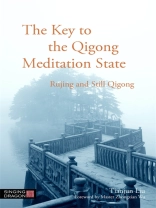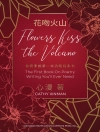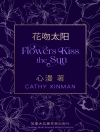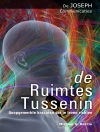Exploring classic Qigong meditation from the perspective of modern psychology, parapsychology and cognitive science, Dr. Tianjun Liu defines the mental state of ‘still’ Qigong in new terms, identifying a specific mental state, Rujing. He examines the psychology of meditation, showing what happens, both mentally and physically, when a person is in a meditation state.
Dr Liu shows how the mastery of Rujing is a fundamental skill vital to the practice of Qigong, and presents a new type of Qigong exercise which takes the achievement of Rujing as its primary goal. His scientific approach to meditation is a breakthrough in this area and will be of interest to practitioners of Qigong and related practices at any level, in addition to anyone with an academic interest in meditation.
Зміст
Foreword by Master Zhongxian Wu. Preface. 1. Rujing and Qigong. 1.1. Two Concepts. 1.2. Rujing and Three Adjustments. 1.3. Rujing and the Types of Qigong. 2. The Realm of Rujing. 2.1. Difficulty in Defining. 2.2. The Levels of Rujing. 2.3. The Experience of Rujing. 2.3.1. Sensory Experience. 2.3.2. Emotion and Mood Experience. 2.4. Rujing and Motion. 3. The Mechanism of Rujing. 3.1. The Mechanism of Mind Adjustment. 3.1.1. The Mechanism of Mind Adjustment. 3.1.2. Sensory Thinking. 3.1.3. Emotion/Mood Thinking. 3.1.4. Biochemical and Physiologic Functions of Brain. 3.2. The Mechanism of Breathing Adjustment. 3.2.1. Better Understanding of Breathing. 3.2.2. Alteration of the Breathing Forms in the Process of Rujing. 3.2.3. The Mechanism of Inhaling and Exhaling in Rujing. 3.2.4. Breathing and Vital Energy. 3.3. The Mechanism of Body Adjustment. 3.3.1. Common Postures in the Process of Rujing. 3.3.2. The Mechanism of the Postures. 4. The Benefit of Practicing Rujing. 4.1. Curing Diseases and Illness. 4.2. Keeping You Healthy. 4.2.1. Adjusting Your Body and Mind. 4.2.2. Delaying the Process of Aging. 4.3. Cultivating Your Latent Potentiality. 4.4. Understanding the Universe. 5. The Preparatory Work of Rujing. 5.1. Daily Adjustments of Mind and Body. 5.1.1. On Psychological Aspect. 5.1.2. On Physiological Aspect. 5.2. Preliminary Arrangement before Practicing Rujing. 5.2.1. Objective Concerns. 5.2.2. Subjective Concerns. 6. Operation of Rujing. 6.1. The Basic Principle of Operation. 6.2. Operation of Mind Adjustment. 6.2.1. Operation of Thinking. 6.2.2. Operation of Mood. 6.3. Operation of Breathing Adjustment. 6.3.1. Operation of Inhale and Exhale. 6.3.2. Operation of Various Breathing Forms. 6.4. Operation of Body Adjustment. 6.4.1. Basis on Posture Arrangements. 6.4.2. Gist of Posture Operation. 6.5. Coordination and Unity of Three Adjustments. 7. Malfunction of Rujing. 7.1. Identity Malfunction and Its Causes. 7.2. Types and Corrections. 8. Piao Hua Gong. 8.1. Design of Piao Hua Gong. 8.2. Operating Procedures.
Про автора
Tianjun Liu, O.M.D., is Director of the Qigong research laboratory at Beijing University of Chinese Medicine where he has taught Qigong for more than twenty years. He is also secretary general of the National Qigong Education and Study Association, secretary general of China Academic Society of Medical Qigong, and the first government approved academic mentor for Ph.D. candidates in the field of medical Qigong in China. For the past decade, Dr. Liu has been Editor in Chief of Qigong Study in Chinese Medicine, the only official Qigong textbook used in universities and colleges of traditional Chinese medicine in China.












